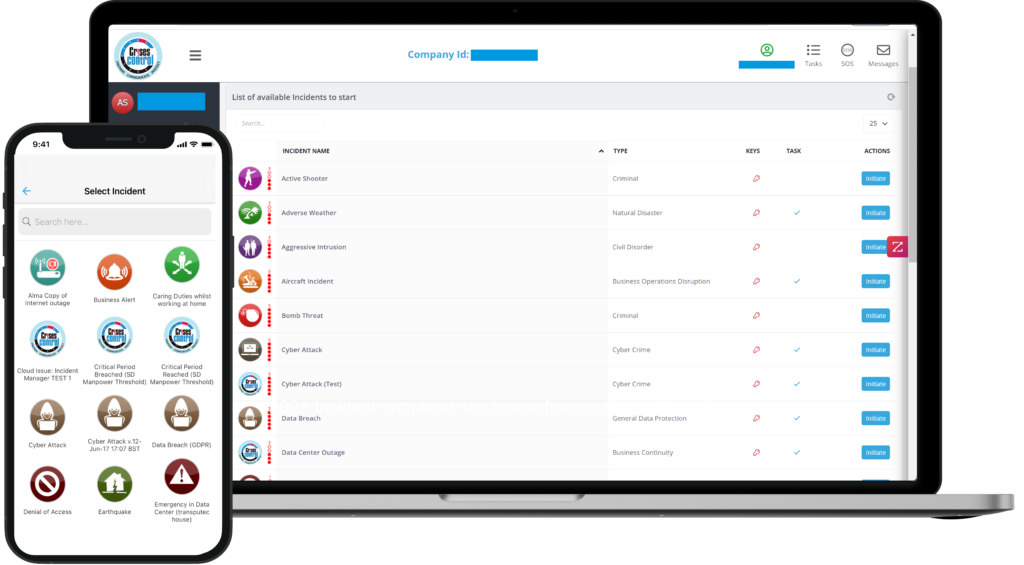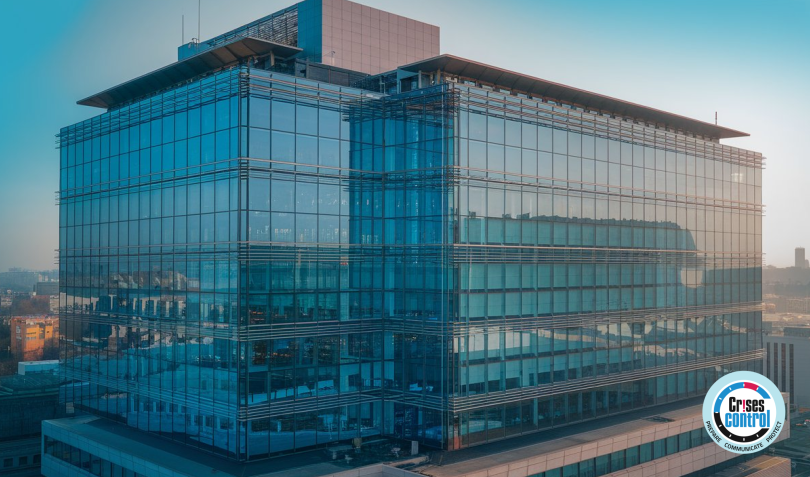Written by Anneri Fourie | Marketing Executive
Effective communication is crucial to the success of any business, and it becomes even more vital during a crisis. For large, geographically dispersed enterprises, keeping teams aligned and informed in real time during a critical event can be particularly challenging. This is where Incident Management Software comes into play, providing a centralised platform that helps businesses manage crises more effectively and communicate clearly across departments and locations.
In this blog, we’ll explore how incident management software improves communication in large enterprises, the key challenges it addresses, and how Crises Control’s solutions can help your organisation take control when it matters most.
Understanding Communication Challenges in Large Enterprises
Large enterprises, especially those with global operations, face unique communication challenges during incidents. Here are some of the common issues these businesses encounter when trying to manage a crisis:
1. Geographically Dispersed Teams
As businesses grow globally, their teams often spread across multiple locations and time zones. When a crisis hits, communicating in real-time can be a major hurdle, especially if the incident occurs outside regular business hours in some regions. Without a unified system to handle communications, responses may be delayed, leading to bigger problems.
Example:
An IT outage in the European office might occur after the day’s work has ended in the U.S. Without a proper communication system, key teams may not receive timely updates, causing delays in resolving the issue.
2. Information Silos
Large enterprises often have multiple departments using different tools and platforms. This can create information silos, where data doesn’t flow freely between teams. During a crisis, this lack of transparency can result in critical information being delayed or even lost, severely hindering the organisation’s ability to respond effectively.
3. Delayed Decision-Making
When communication breaks down, decision-making slows down. In a crisis, time is of the essence. Delays in communication can escalate the situation, causing greater operational disruption, reputational harm, and financial loss.
Solution:
To address these challenges, large enterprises need an efficient system that ensures clear, real-time communication across all teams, no matter where they are located. That’s where Incident Management Software can make all the difference.
How Incident Management Software Enhances Communication
Incident Management Software offers a range of features specifically designed to overcome the communication hurdles that large enterprises face. Below, we’ll look at the key ways this software enhances communication and response times:
1. Centralised Communication Hub
One of the most important features of incident management software is the centralised communication hub. This hub integrates all communication tools, making it easy for teams to access real-time information, share updates, and collaborate—all from a single platform. This eliminates the need for constant switching between systems, ensuring that everyone is working with the same, up-to-date information.
Why It Matters:
For large enterprises with thousands of employees scattered across multiple locations, a centralised hub ensures that everyone is on the same page, regardless of their department or geographical location. It cuts down on confusion and speeds up the decision-making process during a crisis.
2. Real-Time Alerts and Notifications
In a crisis, time is everything. Delayed communication can mean the difference between a minor issue and a full-blown disaster. Incident management software allows organisations to send real-time alerts and notifications across multiple channels, including SMS, emails, and mobile app notifications. This ensures that critical updates reach the right people instantly, no matter where they are.
Example:
Imagine a data breach at a large financial institution. With real-time notifications, IT teams across different regions can be informed within seconds and begin taking action immediately, significantly reducing the potential damage.
3. Collaboration Across Departments
In large enterprises, crises often require collaboration between various departments—IT, operations, legal, HR, and more. Incident management software provides a platform for all teams to communicate and collaborate in real time. Teams can share information, assign tasks, and track progress on a single system, which ensures a faster, more coordinated response.
Real-World Benefit:
During a manufacturing plant emergency, operations, safety, and HR teams can communicate seamlessly through the platform, ensuring all relevant parties are informed and can take action without delay.
4. Mobile Access for On-the-Go Communication
In today’s mobile world, many employees work remotely or are constantly on the move. Incident management software offers mobile access, allowing team members to receive and send updates from anywhere, using their smartphones. This feature is critical for ensuring that all employees, including those off-site or in the field, are kept in the loop during an incident.
Why It Matters:
In industries like aviation or oil and gas, where employees are often in different locations, mobile access ensures that everyone can stay connected and informed, no matter their physical location.
5. Improved Reporting and Audit Trails
After a crisis has been resolved, it’s important to review what happened and how the response unfolded. Incident management software provides detailed reporting and audit trails, documenting every communication, decision, and action taken during the incident. This information is invaluable for post-incident analysis, helping organisations improve their response strategies for the future.
Example:
An audit trail can help a healthcare organisation review their response to a medical equipment malfunction, identifying areas where communication could be improved to prevent future issues.
Why Incident Management Software is Essential for Large Enterprises
For large enterprises, managing communication during a crisis is especially challenging due to the size and complexity of the organisation. Here’s why incident management software is a must-have tool:
1. Faster Incident Resolution
When communication is centralised and all team members are receiving real-time updates, incidents are resolved more quickly. Quick responses help to minimise damage and ensure the business gets back to normal operations faster.
2. Reduced Miscommunication
In high-pressure situations, miscommunication can lead to confusion, mistakes, or delays. With incident management software, everyone has access to the same real-time information, which significantly reduces the risk of miscommunication.
3. Business Continuity
The primary goal during any crisis is to keep the business running smoothly while managing the issue. Incident management software ensures that teams are able to communicate and respond in real time, which helps to maintain operational continuity.
4. Cost Savings
Delays in communication can lead to higher costs, whether due to extended downtime, missed opportunities, or reputational damage. Incident management software helps prevent these issues, saving businesses both time and money in the long run.
How Crises Control’s Incident Management Software Can Help Your Enterprise
At Crises Control, we specialise in helping large enterprises overcome the communication challenges that arise during crises. Our comprehensive Incident Management Software is designed to streamline communication and enhance your crisis management efforts. Here’s how our tools can support your business:
1. Ping Mass Notification System
Our Ping Mass Notification System allows businesses to send mass notifications in seconds. Whether you need to alert your entire workforce or update specific departments, the system ensures that everyone is notified immediately, no matter their location, enhancing overall safety and communication effectiveness.
2. Real-Time Incident Alerts
Our system ensures that critical updates reach all relevant stakeholders instantly through SMS, email, and app notifications, so no one is left in the dark during emergencies, ensuring rapid responses to any situation.
3. Task Manager for Seamless Collaboration
The Task Manager allows teams to assign, track, and complete tasks collaboratively, making sure no step is missed during the crisis response, thus improving efficiency and accountability among team members.
4. Mobile App for On-the-Go Access
The Crises Control Mobile App keeps employees connected, no matter where they are. It provides access to critical updates and ensures real-time communication, even for remote teams, allowing for quick decision-making during incidents.
5. Comprehensive Reporting and Audit Trails
Our software provides detailed post-incident reports and audit trails, allowing you to review your response efforts and make improvements where needed, ensuring accountability and fostering continuous improvement in crisis management.

Interested in our Incident Management Software?
Customise your Crisis Incident Management Software to meet your specific needs with our flexible tools & stay connected and informed during the crisis and incident management process
Conclusion: Take Control of Your Communication with Crises Control
In today’s fast-paced, interconnected business world, the ability to communicate clearly and quickly during a crisis is vital. Incident Management Software offers large enterprises the tools they need to streamline communication, improve response times, and ensure business continuity.
At Crises Control, we provide tailored solutions to help your business enhance communication during critical incidents. Don’t wait for the next crisis to act. Get a free personalised demo today and take control of your enterprise’s crisis communication.
Request a FREE Demo

